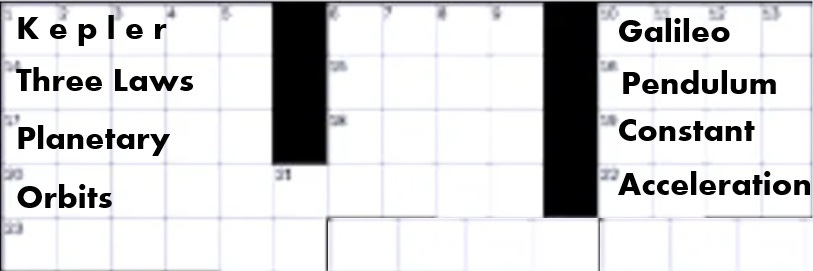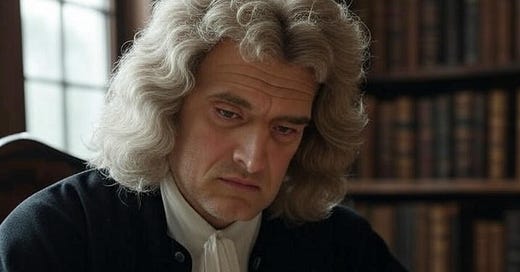Clear thinking requires a person to understand how existing ideas are combined to generate new knowledge, especially in science. A new hypothesis or theory is considered valid if it -
explains real world observations (i.e. conforms to reality),
fully integrates related findings,
does not contradict what we already know,
in some cases, it may make new predictions that can be verified.
The best scientists understand this and it allows them to produce fully integrated theories that add to our knowledge without contradiction.
The average person does not have an appreciation for this fact. So, it is easy to be caught up in all the hype surrounding certain scientific topics. It is typical for an article to focus on a single event, anomalous experimental result or promising new finding. These types of stories are used to hype some narrative. It is not uncommon to see a headline announcing a new battery technology that will “change everything”. Another headline warns that this hurricane season could be the “worse on record”. During COVID, the term ‘super-spreader event’ entered our lexicon because of media coverage. These are all instances where news coverage over simplifies the science to grab your attention.
Science is never as simple as the headlines make it out to be. Reports like these concentrate on a narrow aspect of the science often glossing over, or completely ignoring the wider scientific context. These news sites and videos try capture an audience - including you - with bite-size narratives that are easily understood. But, it robs the reader of a complete, well rounded understanding of the subject. This simplistic treatment of complicated scientific subjects then becomes fodder for public debate and has fostered a distrust in science. How often have you seen some troll link to an article that supposedly ‘proves’ masks are effective against the spread of COVID or another who quotes a paper that shows water absorbs more heat than carbon dioxide?
As a responsible consumer of science content, you should have at least a rudimentary understanding of the scientific process. It doesn’t have to be Ph.D. level. The process of integrating new observations with existing knowledge is messy and complicated. You just need enough information to maintain a healthy perspective when reading an article or watching a video, especially content that covers politically charged subjects. That is why I want to introduce an analogy - the crossword puzzle - that is helpful in understanding some of the finer aspects of how science is made.
I was introduced to this valuable analogy while reading Susan Haack’s book, Defending Science - Within Reason. Haack is a philosophy professor at the University of Miami focusing on the philosophy of science. She uses the crossword analogy to explain how a scientific theory goes from promising speculation to validated knowledge. Using this analogy as a mental template can help you navigate new and speculative subjects in science. I extend this analogy to established theories so that you will have some perspective when someone argues that quantum mechanics is bogus or some such thing.
Haack’s analogy works this way. Every crossword starts with clues to the answers for a blank interlocking grid. The interlocking nature of the puzzle forces answers to depend on each other. The answers to the Down clues share letters with the answers to the Across clues. This feature of crossword puzzles has analogs when discussing scientific theories.
An established theory is like a completed crossword puzzle. Different lines of evidence, observations and scientific conclusions have been filled in, so to speak. Scientists have demonstrated that each relates to the other and supports a single conclusion. The theory is integrated to create a coherent whole. Any new evidence must fit into that ‘puzzle’ without contradiction. In other words, the new finding must ‘share letters’ with all the other interlocking ‘words’.
Some of the more important advancements in science have managed to bring different established theories together to form a new more powerful theory. The crossword helps us visualize this. The path Newton took to arrive at his theory of universal gravitation is an example. It starts with the knowledge created by Galileo and Kepler.
Galileo studied the motion of pendulums, falling objects and balls rolling down inclined planes. His key insight was to split the motion of any object into a horizontal and a vertical component. In this way, he reached two conclusions. Horizontal motion occurs with constant velocity (no acceleration) and vertical motion occurs with constant acceleration (velocity increases at a constant rate). All the results of his experiments supported the conclusions even though each form of motion was qualitatively different. In Haack’s analogy, the observations might be said to share letters in the crossword grid and complete one corner of the puzzle.
Kepler defined three laws of planetary orbits using observations of the motion of the various planets. He started with data for one planet and tried various types of orbits. He found that an elliptical orbit with the Sun at one focii accurately reproduced the observed data. His equations produced answers that matched the measurements. Having found a satisfactory solution for one planet, he used his new equation to predict how the other planets moved around the Sun. The predicted results agreed with the observational measurements for each of the planets he tried. This success prompted Kepler develop his three laws of planetary orbits which allowed scientists to apply his findings to any theoretical planet orbiting the Sun. Again, this illustrates how multiple lines of evidence intertwine to arrive at a conclusion. This new knowledge could be thought of as solving a different section of the same crossword.

Newton of course knew of these two theories and treated them as independent. There was no reason to consider them as part of some larger theory. Kepler was dealing with motion in space and Galileo was describing motion here on Earth. But when Newton started to investigate circular motion, he realized there might be a link between the two.
Newton conducted experiments of circular motion using a ball swinging around at the end of a string. Newton redefined Galileo’s concept of acceleration as a change in motion. Generalizing in this way, he realized that a ball traveling in a circular path experienced a change in direction. It was accelerating and therefore experiencing a force. That force was directed towards the center of the circular path along the string. He couldn’t help noticing a similarity to Kepler’s calculations of planetary orbits.
This critical observation allowed Newton to link his findings with those of Galileo and Kepler. Through careful derivation, Newton was able to show that Galileo’s pendulum and rolling ball experiments, Kepler’s equations of planetary motion and his own experiments on circular motion were all governed by the same dynamics. He further showed how his same theory could explain other phenomenon, like the ocean tides.
Newton integrated all of this knowledge using separate lines of investigation across a broad range of subjects. His work is analogous to solving a clue for one long word that stretches across the grid uniting the Kepler and Galileo corners of the puzzle.

How does Haack’s crossword analogy help us understand newer theories as they develop? She points out that crossword clues are often ambiguous. You may be working on a clue for 6 Across - “Annoying person”. You know the answer is a six-letter word ending in ‘er’ because you’ve already solved 9 and 10 Down. You decide to try ‘snorer’, but you won’t be certain until you solve the corresponding clues for 5, 6, 7 and 8 Down. So, you pencil-in your guess.
Similarly, scientific observations can often leave the scientist considering two or more possible causes. For example, astronomers have noticed irregularities in the orbits of Neptune and Uranus. Geologists have noted a periodicity to impact crater on Earth and the Moon. So we know there is wobble in the orbit of the outer planets and that there are periods in the past with heavy bombardment of meteors. Putting these two pieces of evidence together, scientists have postulated that there is a mysterious object orbiting the Sun out past Pluto and Neptune. But in all the years of searching, astronomers haven’t been able to find any object that would explain these observations. So for now, they have penciled in “nineth planet” as the answer.
But there are other scientists who have started wondering if that is the right answer. They point to the fact that scientists have developed techniques to find planets orbiting other stars light-years away. It is hard to believe an object much closer has avoided detection all these years. Other scientists studying the Oort Cloud, a halo of icy debris billions of miles from the Sun. They have recorded dynamics that may explain the observations without the need for a nineth planet. Continuing the crossword analogy, this is akin to looking for answers to 5 or 6 Down to see if they strengthen the case for “nineth planet” or rule out that answer.
I believe Haack’s crossword analogy offers a useful mental template for the reader. It illustrates how established theories form an interlocking matrix using multiple lines of evidence. Similar to a completed crossword puzzle, it is impossible to change one aspect of a theory without effecting the whole. This analogy also helps keep some perspective on new scientific discoveries. These discoveries are typically unintegrated pieces of knowledge that the scientist has penciled-in as the best guess. More investigation is required to confirm the result and fully integrate it into an accepted theory. By keeping this analogy in mind, you will develop the proper perspective - one that treats the information free of unnecessary baggage, free of hype.





